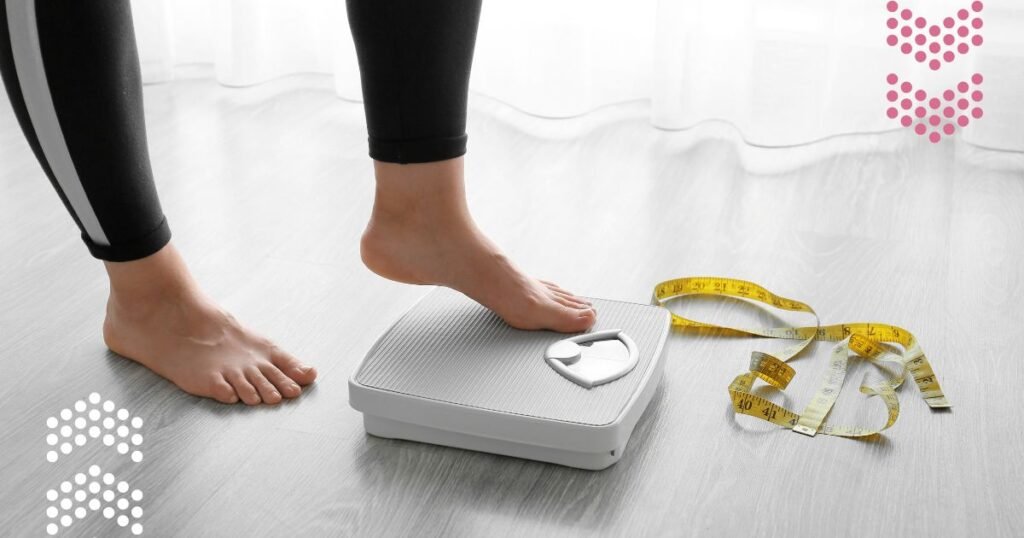Basal Metabolic Rate (BMR) is an essential part of how your body uses energy. It refers to the number of calories your body burns to keep you alive, even when you are at rest. As a woman, understanding your BMR can significantly impact your weight loss efforts and general health goals.
Knowing your BMR allows you to make informed decisions about your diet, exercise, and overall lifestyle. It can help you understand how many calories you need to maintain your current weight or how to adjust your caloric intake to lose or gain weight. By tracking and adjusting your BMR, you can tailor a weight loss or fitness plan that works best for your body.
BMR plays a crucial role in the metabolism, the process by which your body converts what you eat and drink into energy. By understanding your BMR, you’ll have a better grasp of your metabolism and how it affects your weight.
What is Basal Metabolic Rate (BMR)?
Basal Metabolic Rate (BMR) is the number of calories your body needs to perform basic life-sustaining functions, such as breathing, circulation, nutrient processing, and cell production. It is important to note that BMR measures how many calories your body burns at rest, meaning it does not account for the calories burned during activities like exercise or physical labor.
BMR is different for every individual, and for women, factors such as age, weight, muscle mass, and hormone levels can significantly influence it. For example, women tend to have a lower BMR than men because they generally have less muscle mass. However, by understanding your unique BMR, you can better tailor your diet and exercise plans to match your body’s specific caloric needs.
Knowing your BMR helps in designing a personalized weight loss plan that ensures you’re consuming the right number of calories for your body. It helps prevent under-eating, which can slow your metabolism, or over-eating, which can hinder weight loss efforts.
How to Calculate Your BMR: A Woman’s Guide
Calculating your BMR is a straightforward process that uses the Harris-Benedict equation, which takes into account your age, height, weight, and sex. The Harris-Benedict equation is widely used for calculating BMR and helps give a more accurate picture of how many calories you burn at rest. Here’s the formula for calculating BMR for women:
BMR = 655 + (9.6 x weight in kg) + (1.8 x height in cm) - (4.7 x age in years)
This formula provides an estimate of how many calories your body needs to perform basic functions while at rest. Keep in mind, however, that this is just a starting point. Factors such as your activity level, body composition, and even genetics can affect your BMR.
If you prefer not to manually calculate your BMR, you can use an online BMR calculator specifically designed for women. These tools take the guesswork out of the process and provide a reliable estimate of your BMR. To explore more about calculating BMR, visit our guide on how to calculate your BMR.
How BMR Changes with Age and Weight Loss in Women
For women, BMR decreases naturally as they age. This is primarily due to the loss of muscle mass and the natural slowing down of metabolic functions as we grow older. After the age of 30, women experience a steady decline in muscle mass, which directly impacts their BMR.
This is why women in their 40s and 50s often notice that it becomes harder to maintain or lose weight, even when they are eating the same number of calories as they did in their younger years. The reduced muscle mass means their bodies require fewer calories to function, making it easier to gain weight if dietary intake is not adjusted.
Another factor that influences BMR is weight loss. When you lose weight, your body requires fewer calories to function because it has less mass to maintain. However, this can sometimes lead to a frustrating weight loss plateau where it becomes difficult to shed the last few pounds. This occurs because your BMR has decreased with weight loss, so you are burning fewer calories than before.
Women can manage these changes by increasing their muscle mass through strength training and adjusting their caloric intake as needed. Learn more about how BMR changes with age and weight loss.
How to Boost Your BMR through Lifestyle and Diet Adjustments for Women
Fortunately, there are several ways women can boost their BMR through lifestyle and diet adjustments. One of the most effective methods is to increase muscle mass through strength training. Muscle burns more calories than fat, so the more muscle you have, the higher your BMR will be. Even when you are not actively exercising, your body will burn more calories just by maintaining your muscle mass.
In addition to strength training, certain dietary changes can also help boost BMR. Protein-rich foods, for example, require more energy to digest than carbohydrates or fats, meaning your body burns more calories processing protein. Eating smaller, more frequent meals throughout the day can also help keep your metabolism active.
Staying hydrated is another simple but effective way to increase your BMR. When you are dehydrated, your metabolism slows down, so drinking plenty of water can help keep it running efficiently.
Learn more about how to boost your BMR with lifestyle and diet changes.
BMR vs. Resting Metabolic Rate (RMR): Key Differences for Women
Many people confuse BMR with Resting Metabolic Rate (RMR), but there are key differences between the two. While BMR measures the number of calories your body burns to perform basic life-sustaining functions, RMR takes into account the energy used for other everyday activities, such as walking and digesting food.
For women, understanding both BMR and RMR is important for creating a comprehensive weight loss or maintenance plan. While BMR provides a baseline for the number of calories burned at rest, RMR offers a more realistic estimate of your daily calorie needs.
Using both BMR and RMR together allows for a more accurate picture of how many calories you need to maintain, lose, or gain weight. To learn more about the key differences between BMR and RMR, visit our blog.
How BMR Differs Between Men and Women
Women generally have a lower BMR than men due to differences in body composition. Men typically have more muscle mass and less body fat than women, which means they burn more calories at rest. In addition, hormones such as estrogen and testosterone play a role in determining BMR. Women’s BMR can fluctuate throughout their menstrual cycle and during pregnancy or menopause.
While women naturally have lower BMRs, they can still take steps to improve their metabolism by engaging in regular exercise, eating a healthy diet, and managing stress levels.
To understand more about how BMR differs between men and women, visit our website.
Adaptive Thermogenesis: How Your Body Responds to Weight Loss as a Woman
When you lose weight, your body may go into what’s known as adaptive thermogenesis. This is a survival mechanism that causes your metabolism to slow down in response to decreased food intake and weight loss. Essentially, your body becomes more efficient at using the calories it does get, which can make further weight loss more challenging.
This is why many women hit a weight loss plateau after an initial drop in weight. Adaptive thermogenesis makes it harder to continue losing weight, even when maintaining the same calorie deficit. Overcoming this requires changes in your workout routine and possibly calorie cycling to keep your metabolism guessing.
To read more about adaptive thermogenesis and how it affects weight loss, visit our blog.
Monitoring Your BMR and Adjusting Your Plan: A ShapioX Perspective
At ShapioX, we provide various tools and calculators to help you monitor your BMR and make adjustments to your weight loss or fitness plan as needed. By regularly checking your BMR, you can better understand how your body’s metabolism changes over time and make informed decisions about your diet and exercise routine.
Using BMR as a guide allows you to personalize your weight loss journey, ensuring that you are consuming the right number of calories for your unique body composition and goals. Tracking your BMR can also help you avoid common pitfalls like under-eating or over-exercising, which can negatively impact your metabolism.
Conclusion
Understanding your Basal Metabolic Rate (BMR) is key to achieving your weight loss and fitness goals. By learning how your body’s metabolism works, especially as a woman, you can tailor your approach for optimal results.
Remember that your BMR changes with age and weight loss, so it’s essential to stay informed and adjust your caloric intake and activity levels accordingly. By incorporating strength training, eating a balanced diet, and staying hydrated, you can boost your BMR and support your fitness journey.
For more resources, tools, and information on how to better understand your BMR and metabolism, explore our full range of guides and calculators at ShapioX. Also, don’t forget to check out our guide on understanding your BMR.
Additionally, for more comprehensive health advice, you can explore weight loss for women or understand the impact of diet and weight loss on overall health from external resources.
Browse our website to find all the tools, recipes, and resources ShapioX offers to help you reach your health and fitness goals.


